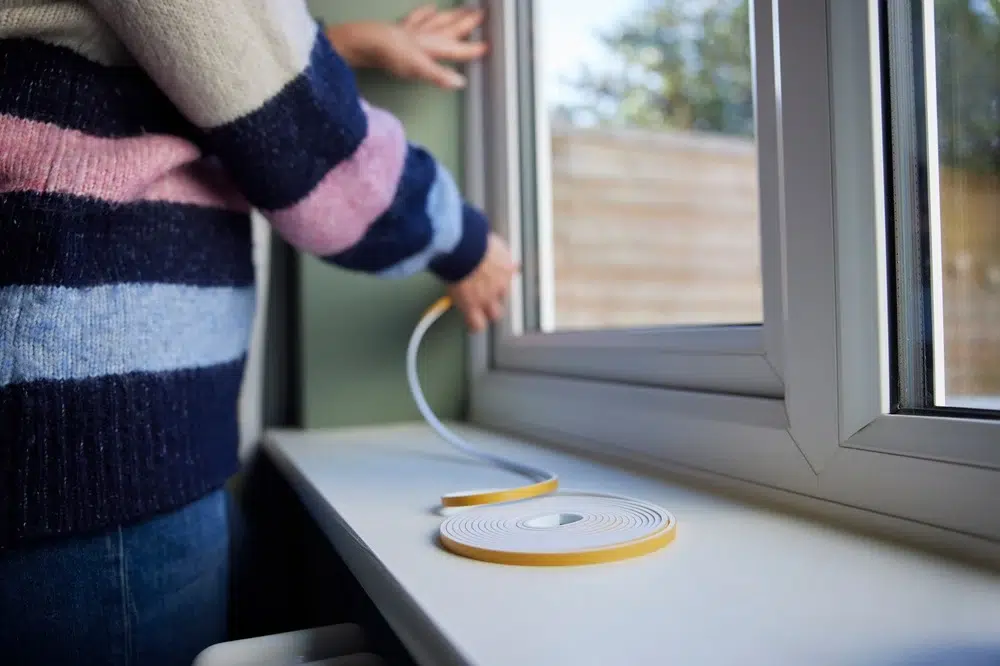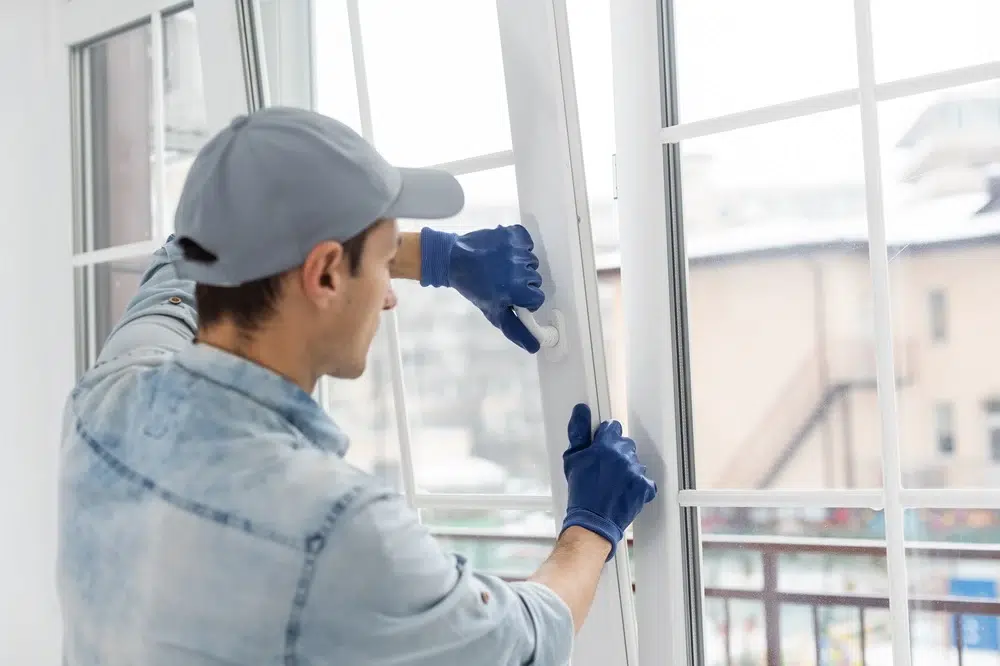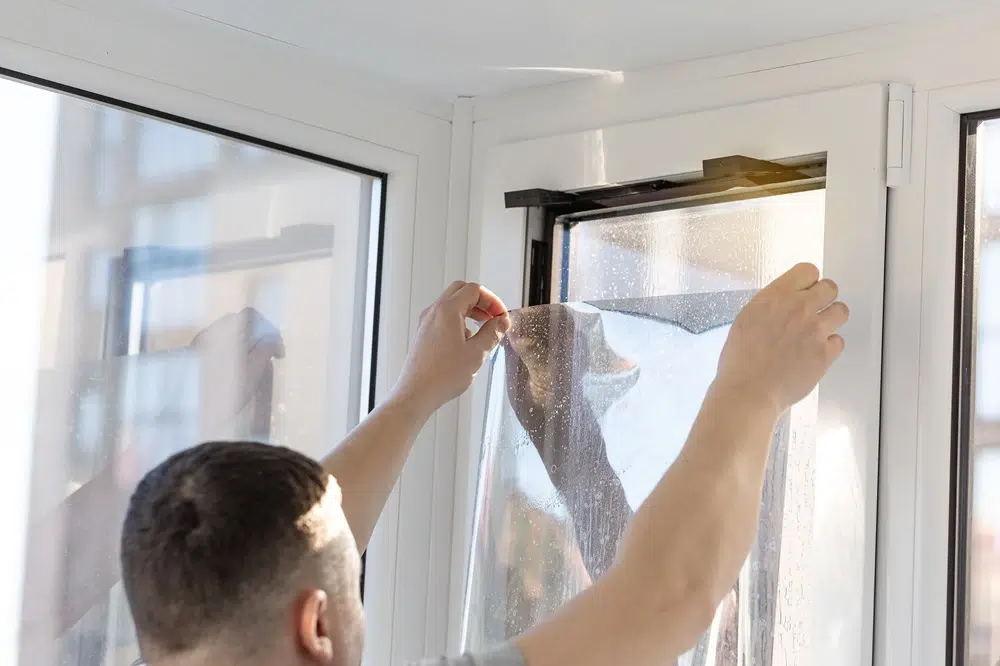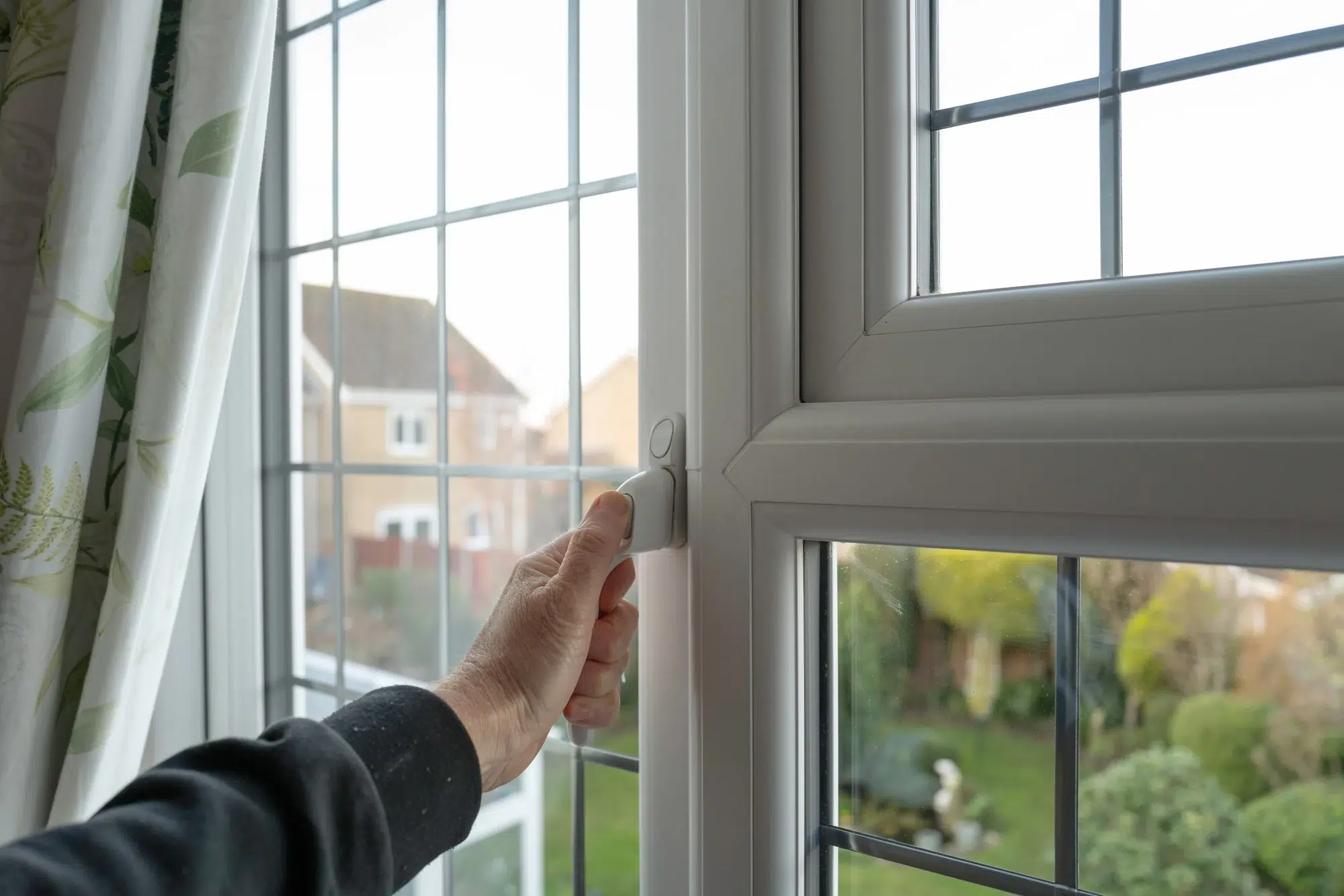Effective window insulation is essential, not just for winter warmth, but also for summer comfort. It starts with a check for necessary window repair and leads to increasing energy efficiency, creating a more comfortable ambient temperature, and saving money on your energy bills.
This guide will provide you with the best way to insulate single-glazed windows, walking you through all of the necessary steps.
Why Insulating Windows Matters
Windows are responsible for a significant portion of heat loss in homes, especially older windows with single-pane glass. When warm air inside your room comes into contact with the cold window glass on a cold day, heat is transferred to the outside and this heat loss increases your energy consumption. Insulating your single-pane window helps create a barrier, reducing that heat transfer.
This leads to several benefits:
- Improved energy efficiency: Insulating reduces heat loss in the winter and heat gain in the summer, leading to lower energy bills and creating a more energy-efficient home.
- Increased comfort: Properly insulating windows eliminates cold drafts, making your home more comfortable, especially in colder weather. You will also notice that it will help you control hot air during the warmer months.
- Reduced noise: Some insulating methods can also help reduce noise coming from outside.
- Protection from moisture: Insulating older windows helps reduce condensation which reduces the chances of mold, peeling paint, and damage to the window frame.

Insulating Single-Pane Windows Step-by-Step
Here are the basic steps needed to insulate single-pane windows effectively.
Step 1: Choose Your Sealant
Choosing the right sealant for your needs will prolong window insulation, so make sure that you make the right choice:
- Know the options. Silicone is a great option for areas that come into contact with moisture, while acrylic latex is a great option that is easy to paint.
- For small gaps, use a good quality caulk, for larger gaps between the window frame and the wall, use a backer rod before caulking to fill the space more efficiently.
- Choose a caulk that is easy to apply, using a caulking gun for best results.
Step 2: Inspect and Prepare Your Windows
To ensure your insulation efforts are successful, inspect your windows for damage and prepare the area:
- Identify and seal gaps and cracks: Inspect your window frame, window sashes, and window jamb for cracks or gaps. Seal these with caulk or weather stripping to prevent air leaks. Don’t forget to check between the window and the wall as well.
- Clean the area: Thoroughly clean the window frame and the surrounding area with a brush and a cloth. If there is any dust or dirt, the insulation may not properly stick. Remove any peeling paint or debris to prepare the surface.
- Test the windows: Make sure the windows open and close easily, as the insulation method may make them more difficult to use.

Step 3: Seal Your Windows
Now that you’ve identified and cleaned the gaps, it’s time to seal them up properly. Here’s how to apply new caulk:
- Using a caulking gun, apply a continuous bead of caulk along any gaps or cracks in the window frame. Make sure to get a good seal around the entire perimeter of the window.
- Use a putty knife (or a wet finger) to smooth out the caulk and create a clean, even seal. This will also help the caulk adhere better to the surface.
- Refer to the caulk manufacturer’s instructions for the recommended drying time. Let the caulk dry completely before checking for drafts or moving on to the next step.
Step 4: Consider Secondary Glazing
Secondary glazing involves adding another layer of glass or film to your single-pane windows:
- Window film is a great, affordable option to help insulate your windows. Apply the film to the interior side of your window glass following the manufacturer’s instructions. This creates an extra layer to help block the transfer of heat.
- Storm windows are another great option. These are installed over existing windows and can greatly reduce heat loss and add more insulation.
Step 5: Add Layers with Curtains or Blinds
While not a complete solution, thermal curtains, drapes, or cellular shades can provide more insulation. These options are easy to install and can significantly reduce heat loss and help control the hot air during the warmer months.
Explore our window solutions for a warmer, more comfortable home. Contact Apex Window Werks today for a free quote!
or call us(847) 557-9600
Special Tips for Insulating Single-Pane Windows
While the steps above are a good starting point, here are some special tips to consider for achieving the best way to insulate single-pane windows:
Bubble Wrap Insulation
Bubble wrap can be a surprisingly effective and affordable insulation method. Cut the bubble wrap to the size of your window and lightly spray water on the window glass then stick the bubble side against the glass. This creates more air space that acts as insulation. Use double-sided tape along the edges to make it more secure. It also allows light to still enter the room, unlike some insulating materials that may block it entirely.
Proper Use of Window Film
For the best results, clean the window glass before installing window film. Measure accurately and apply carefully to avoid creating air gaps. Ensure no dust has stuck to the window glass or that the window is not wet because the window film might not stick properly.
Layering for Additional Protection
Combining methods can enhance results. For example, you might use weather stripping, window film, and thermal curtains together for maximum insulating effectiveness. If you have a lot of windows, this could be a great option to consider.

Consider the R-Value
Consider the R-value of your insulation. The higher the R-value, the more effective the insulation will be at preventing heat transfer. This applies to any type of insulation whether it’s window film, bubble wrap, or curtains.
These techniques offer great ways to improve your single-pane window insulation. If you’re seeking professional guidance or considering insulated glass replacement, Apex Window Werks serves Illinois, Minnesota, Wisconsin, and Ohio to provide expert assessments and tailored solutions.
Make Every Season Stressless with Insulated Windows!
Whether you choose simple ways to insulate your windows like bubble wrap or invest in storm windows or secondary glazing, the key is to take action to minimize heat transfer. By using these techniques to improve your single-pane window insulation, you can reduce heat loss, improve energy efficiency, and create a more comfortable home.
With proper insulation, you can seal your windows from the outside and truly enjoy your home. At Apex Window Werks, we believe everyone deserves a comfortable home, and our team is here to assist you with all your window needs. Contact us to make the process smooth, easy, and fast!
Get a free estimate
Hire the Window Repair Company you can trust.





